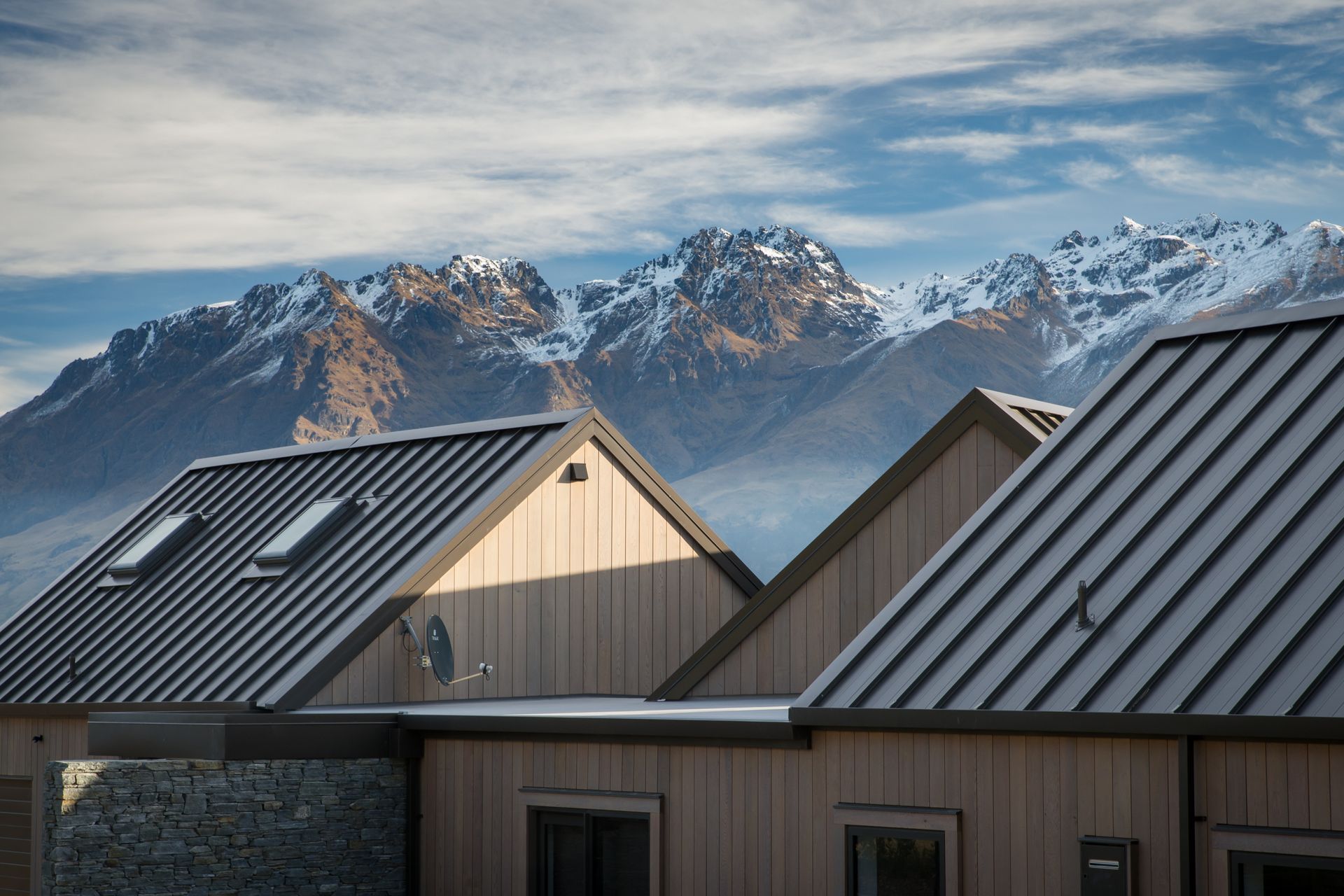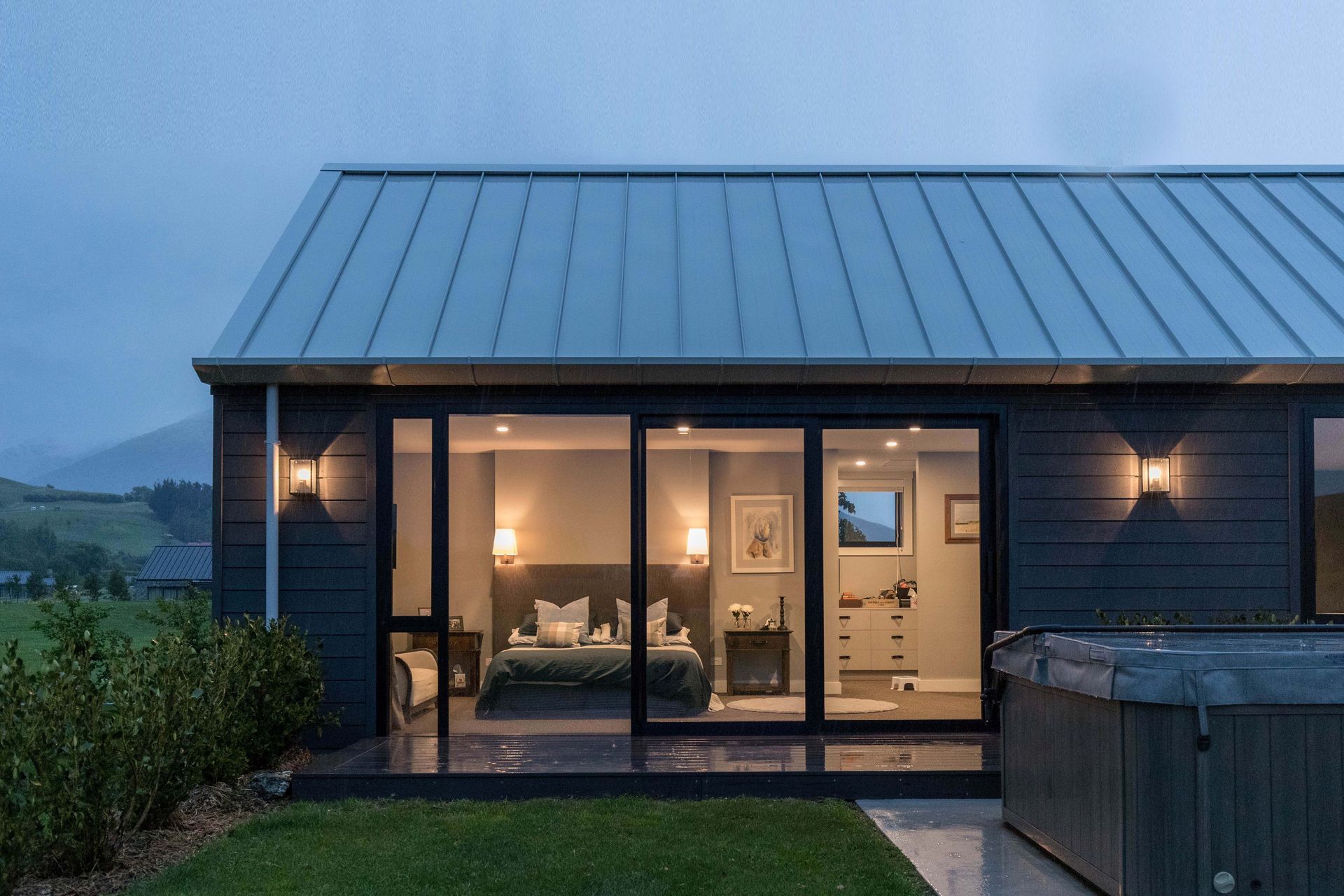A high-performing, visually striking and versatile roof and wall cladding system
Written by
12 August 2024
•
5 min read

Many modern architectural homes throughout New Zealand are designed to reflect the hues and textures of the surrounding landscape and withstand the sometimes brutal weather conditions. A unique roof and wall cladding used to answer to both is Freeman Roofing’s Alpine Tray.
The Alpine Tray standing seam roofing profile is designed to withstand New Zealand’s harshest weather in the toughest environments – its high rib height enhances the bold lines. Furthermore, Alpine Tray provides greater water-carrying capacity and strength for snow-loading uses in alpine regions. Also a top choice for coastal areas, Alpine Tray SS675 is becoming popular for projects right across the country.

Easy, seamless installation made to last
When Freeman Roofing’s Dallas Spence first discovered the roofing solution six years ago, he was impressed with its easy installation.
“Unlike a conventional trapezoid or corrugate roof that needs hundreds of drill holes to fix these profiles to purlins, the Alpine Tray SS675 is securely fastened or ‘snap-locked’ onto roof purlins and wall girts through a concealed clip mechanism,” says Spence.
“With traditional roofs, you're often introducing an additional 300–400 points of potential failure if the screw isn't driven in properly, or if the washer in the screw fails. Then at each of those points, water can enter through the substrate, causing issues in your roof, attic or the framing.”
Removing the need to drill penetrations into your new roof also makes for a sophisticated, seamless roof design.
“It can be chosen with swages within the tray pan for a distinct look or without swages for a more conventional appearance, the width between seams of the tray pan itself can also be adjusted,” says Spence.
Alpine Tray is available in a wide array of finishes and materials to cater to diverse project requirements including painted steel (Colorsteel), copper, zinc and aluminium, allowing for customisation based on specific environmental conditions.



Made for all projects
Alpine Tray has been used for stunning architectural residential projects – from tiny homes to large dwellings.
“It is becoming more and more popular as a wall cladding product for residential homes where it’s often being combined with different types of materials around windows or soffits such as cedar and other wood finishes. In the dark colours, in particular, it can be really quite striking and effective.”
Just as when it’s used as roof cladding, Alpine Tray is equally attractive when used as a wall cladding – offering a clean and seamless design.
“It’s great at eye height because there are no fixings such as rivets and screws because most of the flashings around this particular product don't fix with a rivet or a screw – they are essentially clipped into place and fit together. So not having fixings or screws seen at an eye level is quite a nice contrast to traditional steel wall cladding for a home,” says Spence.
It is also becoming a favoured choice for commercial projects, in particular nursing homes and retirement homes. Currently, Sir Tristram House in Mount Maunganui is having its roof replaced with Alpine Tray.
“Aesthetically, it looks really good, but in a practical sense, the system is durable and safe. So in the long term, for commercial projects, it makes a lot of sense.”

Benefits of Freeman Roofing’s Alpine Tray
“Uniquely designed for harsh weather and demanding environments, the Alpine Tray SS675 stands out as a top choice for alpine and coastal regions, demonstrating its resilience in New Zealand’s harshest weather conditions,” says Spence.
High water-carrying capacity: Alpine Tray SS675’s profile has a rib height of 44mm, which provides increased water-carrying capacity. This makes it suitable for areas with heavy rainfall or snow loads.
Flexibility in appearance: The Alpine Tray SS675 profile offers flexibility in terms of appearance. It can be chosen with swages within the tray pan for a distinct look or without swages for a more conventional appearance.
Easy installation: Unlike a conventional trapezoid or corrugate roof that needs hundreds of drill holes to fix these profiles to purlins, the Alpine Tray SS675 is securely fastened or snap-locked onto roof purlins and wall girts through a concealed clip mechanism. Removing the need to drill penetrations into your new roof.
Compliance with building codes: The use of Freeman Roofing Alpine Tray SS675 helps fulfil the requirements of the New Zealand building code, including structural integrity, durability, fire resistance and external moisture protection.
What should professionals know when specifying and using this product?
When specifying the product in design plans, it is important to cite it as Freeman Roofing Alpine Tray SS675 to ensure that the correct product is used, compliant and accurately manufactured using genuine New Zealand-made Colorsteel.
“Furthermore, specifying Freeman Roofing Alpine Tray in your architectural plans will ensure that alternative products supplied by less fastidious manufacturers in lesser-quality materials are not used. Moreover, professionals should closely follow the recommended design considerations stated in the building product information statement,” says Spence.
Learn more about Alpine Tray and explore more products and projects by Freeman Roofing on ArchiPro.